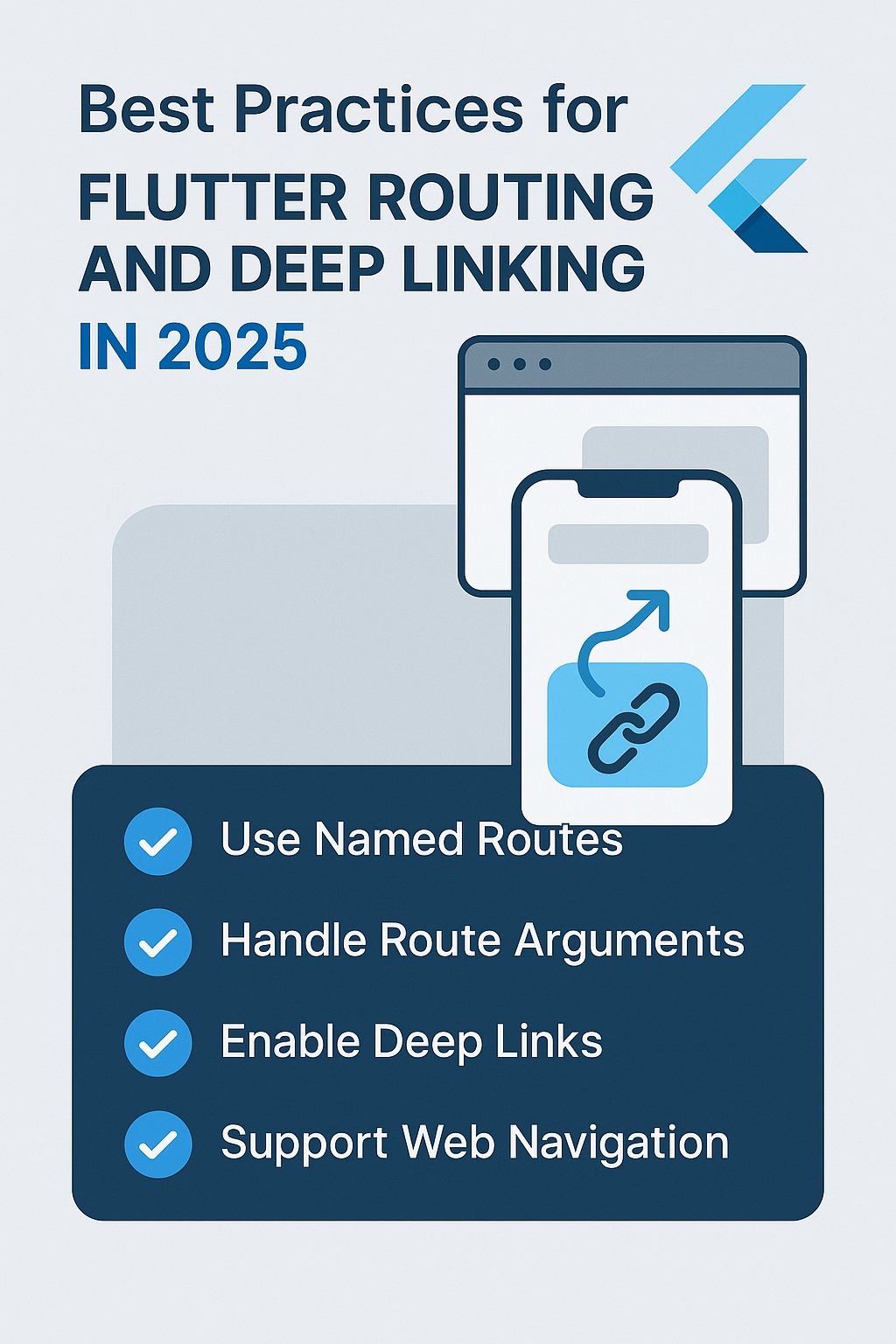
Routing is one of the most crucial parts of Flutter app development — especially when you’re building scalable, multi-screen apps. Combine that with deep linking, and you unlock seamless navigation from external sources like notifications, emails, or browser URLs.
In this post, we’ll cover the best practices for Flutter routing and deep linking in 2025, including how to structure your routes, integrate GoRouter, and support deep links across platforms.
🚦 What is Routing in Flutter?
Routing refers to how you navigate between screens in your Flutter app. There are two main approaches:
- Imperative routing (e.g.,
Navigator.push) - Declarative routing (e.g.,
GoRouter,AutoRoute)
Flutter officially recommends GoRouter for declarative, flexible, and deep-link–friendly navigation.
🔗 What is Deep Linking?
Deep linking allows your app to open specific screens via URLs — such as:
myapp://product/123https://app.monu.club/order/active
It’s essential for marketing, push notifications, and web-to-app navigation.
📘 Learn more: Flutter Deep Linking Documentation
✅ Best Practices for Routing in Flutter
1. Use Declarative Routing with GoRouter
GoRouter is powerful, flexible, and officially supported. It supports:
- Named routes
- Path parameters (
:id) - Redirects and guards
- Deep linking (mobile + web)
final router = GoRouter(
routes: [
GoRoute(
path: '/',
name: 'home',
builder: (context, state) => const HomeScreen(),
),
GoRoute(
path: '/product/:id',
name: 'product',
builder: (context, state) {
final productId = state.params['id']!;
return ProductScreen(productId: productId);
},
),
],
);
💡 You can dynamically navigate with:
context.goNamed('product', params: {'id': '123'});
2. Centralize Route Definitions
Keep all routes in a single file or a dedicated router class. This improves readability and allows better management of nested routes.
3. Name Your Routes
Avoid string-based routing. Use route names (name: 'home') to prevent typos and make navigation easier.
context.goNamed('home');
🧠 Related: Flutter Navigation 2.0 vs GoRouter: Which One Should You Use?
4. Support Deep Linking on All Platforms
Make sure your app supports:
- Android: Setup
intent-filtersinAndroidManifest.xml - iOS: Use
CFBundleURLSchemesanduniversal links - Web: GoRouter handles it out of the box
📘 Official guide: Handling deep links in Flutter
5. Handle Unknown Routes Gracefully
Always provide a 404 fallback screen:
errorBuilder: (context, state) => const NotFoundScreen(),
6. Use Route Guards for Protected Screens
Use redirect logic to handle auth:
redirect: (context, state) {
final isLoggedIn = authService.isLoggedIn;
if (!isLoggedIn && state.subloc != '/login') {
return '/login';
}
return null;
}
🌐 Best Practices for Deep Linking
- ✅ Use meaningful, readable URLs
- ✅ Sync link structure with web if you support PWA or Flutter Web
- ✅ Validate parameters (e.g., check if product ID is valid)
- ✅ Track link opens with Firebase Dynamic Links or Branch.io
🛠 Tools & Plugins to Help
- GoRouter – Recommended router for Flutter
- app_links – Handle deep links in mobile apps
- AutoRoute – Alternative router with code generation
📌 Final Thoughts
Flutter routing and deep linking have come a long way. In 2025, the combination of GoRouter, centralized route management, and deep linking best practices will give your app a polished and scalable navigation experience across all platforms.



